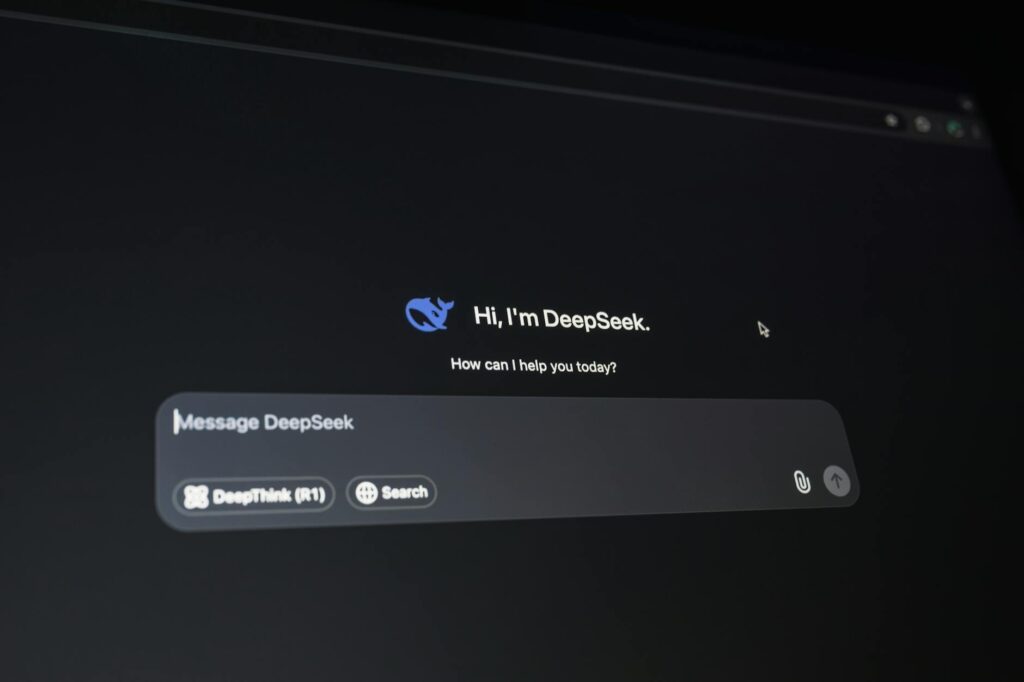Why Compare ChatGPT, DeepSeek, and Grok?
Which AI should you trust for research, products, or everyday tasks? With OpenAI’s ChatGPT, DeepSeek’s focused search-assistant, and Anthropic’s Grok competing, understanding differences matters. This article clarifies how design, capability, safety, cost, and ecosystem shape real-world fit.
We compare them across architecture and training, benchmarks and limitations, integrations and use cases, governance and privacy, plus pricing and developer support. Use these criteria to match an AI to your needs — whether you prioritize accuracy, speed, control, or affordability.
Expect clear comparisons, practical advice, and recommendations for individuals, teams, and enterprises now and going forward safely.
Meet the Contenders: ChatGPT, DeepSeek, and Grok — What They Are
ChatGPT — the general-purpose conversationalist
Born from OpenAI’s research lineage, ChatGPT is positioned as a versatile conversational assistant: answering questions, drafting content, coding, and acting as a workflow co-pilot. Typical audiences: consumers (ChatGPT app), developers (APIs, SDKs), and enterprises (ChatGPT for Teams/Enterprise). Strengths vendors tout: broad knowledge, strong language generation, and an extensive ecosystem of plugins and integrations. Common deployments: cloud-hosted chat apps, embedded chat widgets, and API-backed automation inside products.
DeepSeek — the focused search and insight engine
DeepSeek presents itself as a specialized search/insight system optimized for retrieval, summarization, and enterprise knowledge discovery. Intended audiences: knowledge workers, legal/compliance teams, and product teams who need precise document-level answers rather than open-ended prose. Core value: fast, accurate retrieval + distilled insights from large private corpora (intranets, docs, logs). Availability typically includes APIs and enterprise connectors to platforms like SharePoint, Slack, and data lakes; often run as cloud-hosted managed services with RAG pipelines.
Grok — the high-speed, pragmatic assistant
Grok (as featured here) targets developers and power users who want quick, actionable answers and code-centric interactions. Positioning emphasizes latency, terse responses, and robustness for developer workflows and real-time tasks. Audience: engineers, ops teams, and apps that require snappy Q&A or monitoring assistants. Distribution: consumer-facing chat, developer APIs, and integrations into developer tools and observability stacks.
Next up: we’ll peel back the layers — architectures, training data, and model design choices that cause these differences.
Under the Hood: Architectures, Training, and Data
Model families and scale
ChatGPT sits on the GPT family (GPT-4 and “Turbo” variants), prioritizing large pre-trained transformers. DeepSeek typically pairs a retrieval stack with a smaller, tuned LLM for cost-effective document reasoning. Grok emphasizes leaner, high-throughput transformer variants optimized for low latency in developer workflows. Larger models often mean richer reasoning but higher inference cost.
Training approaches
All three use a layered approach:
Tip: prefer models that expose fine-tuning or instruction-tuning pipelines if you need domain alignment.
Data sources and curation
ChatGPT leverages broad web-scale training plus curated supervised datasets and human ratings. DeepSeek augments base models with proprietary corpora (intranets, documents) via RAG pipelines. Grok trains on developer-oriented datasets and telemetry to excel at operational prompts. Quality of the retrieval index often matters more than raw model size for enterprise search tasks.
Updates and continuous learning
Updates range from periodic model releases to hot-swappable retrieval indexes. Best practice: separate model updates from your knowledge-refresh cadence—keep document indexes refreshed continuously while scheduling model upgrades when functionality changes.
Engineering trade-offs
Retrieval, multimodality, and differentiators
DeepSeek tightly integrates vector DBs, chunking, and reranking. ChatGPT offers multimodal inputs (images) and plugin-driven retrieval. Grok often exposes fast APIs and integrations for real-time logs/observability. If you need private-document answers, prioritize RAG + secure vector stores; if real-time interactivity matters, choose models built and tuned for low-latency inference.
Next: we’ll test how these foundations play out in real-world performance and benchmarks.
Capabilities and Performance: Benchmarks, Strengths, and Weaknesses
How they stack on core dimensions
Practical strengths and failure modes
Actionable tips & quick checks
Real-World Use Cases and Integrations
Use cases mapped to strengths
Integration patterns that work
Common implementation pitfalls (and fixes)
Developer tooling & community accelerators
Trust, Safety, Privacy, and Governance
Content moderation & guardrails
All three vendors provide filtering layers, but effectiveness varies. Practical steps:
Data handling, residency, and enterprise controls
Ask vendors for explicit answers on retention and training use—don’t rely on marketing language. Key controls to demand or implement:
Explainability and human oversight
Explainability is pragmatic, not perfect. Useful tools:
Compliance and trade-offs
Regulated industries must verify SOC 2, ISO 27001, HIPAA/BAA, GDPR data processing agreements, or FedRAMP for U.S. government work. Consider trade-offs:
Reputation risk and mitigation
Real-world anecdote: a marketing bot that hallucinates a false executive quote can snowball into PR crisis. Mitigation tactics:
Next, we’ll translate governance choices into economic terms—how these controls affect pricing, vendor ecosystem, and the practical decision of which AI to buy.
Cost, Ecosystem, and Choosing the Right AI for Your Needs
Pricing models and total cost of ownership
Vendors usually offer three pricing approaches:
Remember true TCO includes development, fine-tuning, monitoring, moderation, cloud inference costs, and ongoing governance. A quick rule of thumb: plan for 2–4x model run costs to cover engineering and safety overhead. Real-world example: an ecommerce startup found API fees were 30% of system costs; moderation, retraining, and logging doubled the rest.
Ecosystem maturity and integrations
Look beyond model quality—check SDKs, prebuilt connectors (CRM, search, analytics), plugin marketplaces, and community tooling. ChatGPT has a broad plugin ecosystem and many third‑party wrappers; DeepSeek-style RAG providers shine with connectors to enterprise search and vector DBs; Grok-like systems prioritize low-latency chat integrations. Mature ecosystems cut integration time and reduce custom engineering.
How to choose — practical heuristics
Match choice to requirements:
Buyer profiles — fast recommendations
Evaluation steps (do these before committing)
With economic trade-offs and practical evaluation in hand, we can now draw an overall verdict in the conclusion.
Verdict and Next Steps: Which AI Comes Out on Top?
Each contender shows distinct trade‑offs: ChatGPT offers broad conversational capabilities and ecosystem maturity, DeepSeek emphasizes specialized retrieval and domain tuning, while Grok targets real‑time, high‑throughput applications. The “best” depends on latency, accuracy on your tasks, data sensitivity, integration complexity, and budget. Run targeted trials against representative workloads, measure task-specific metrics (accuracy, latency, hallucination rate, throughput), and validate privacy and compliance under realistic conditions.
Also weigh vendor support, SLAs, roadmap alignment, and total cost of ownership. Pilot, iterate, and document failure modes. Choose the system that balances capability, trust, and cost for your organization. Start with a concrete POC, involve stakeholders early, and revisit the decision as models and needs evolve.



